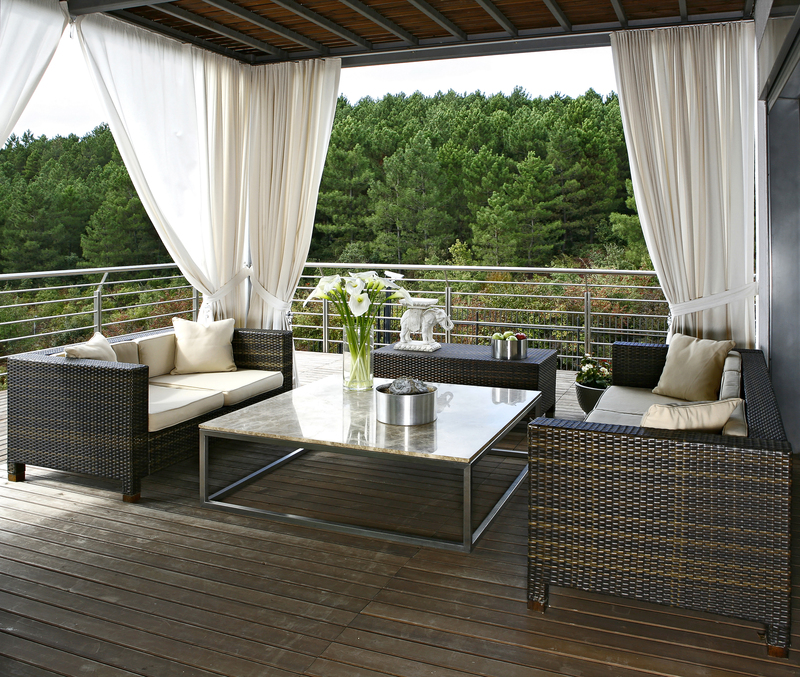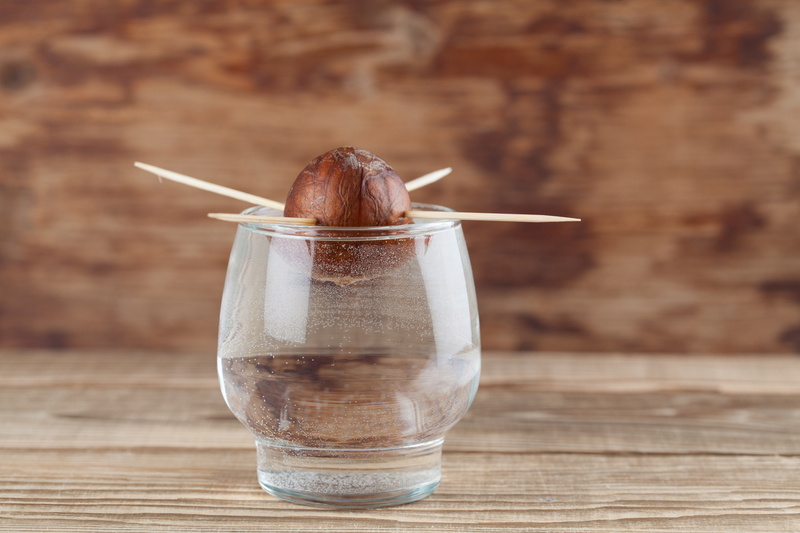Creating an Exciting and Safe Garden Haven for Youngsters
Posted on 07/09/2025
Creating an Exciting and Safe Garden Haven for Youngsters
Designing a vibrant and secure backyard space for kids can turn any outdoor area into a treasured playground and learning environment. A well-crafted garden haven not only nurtures curiosity, play, and exploration but also puts parents' minds at ease with careful attention to safety. This comprehensive guide delves into creative and safe garden ideas, practical tips, and key considerations to help you transform your green space into the ultimate child-friendly oasis.
Why Is a Safe and Exciting Garden Essential for Kids?
- Outdoor play is crucial for physical and psychological development.
- Nature-filled gardens foster creativity, imaginative play, and learning.
- Secure and stimulating designs protect children from harm while enabling adventure.
Creating an exciting garden haven for youngsters isn't just about fun and games--it's about nurturing lifelong health, happiness, and a love for the outdoors. When young children feel safe in their garden, they are more likely to explore, socialize, and develop important motor and social skills. Combining stimulating features with age-appropriate safety measures is the key to crafting an outdoor kids' paradise.

Planning Your Kid-Friendly Garden Oasis
Assessing Your Outdoor Space
Begin by analyzing your available garden area. Consider:
- The size and shape of your garden
- Sunlight and shaded zones
- Existing plants, trees, or hardscape features
- Visibility from the house
- Potential hazards (steps, water, sharp tools, toxic plants)
Understanding the layout allows you to create zones--for play, learning, relaxation, and more--so that your youngsters' garden haven is both functional and magical.
Setting Priorities: Safety First!
Ensuring safety is the cornerstone of a garden guaranteed to delight children and reassure adults. Here's how to make your exciting garden haven for children secure:
- Smooth and soft surfaces: Choose grass, bark chippings, or rubber play mats, especially under climbing equipment and swings.
- Enclosures and boundaries: Install secure fencing and self-closing gates to prevent wandering. Consider visibility spots for parental supervision.
- Remove or block hazards: Fence off ponds, pools, and tool sheds; cover sharp edges; eliminate poisonous plants such as foxglove, lily of the valley, and yew.
- Non-toxic materials: Ensure all paints, stains, and play features are child-safe.
- Safe lighting: Install soft, solar-powered garden lighting for twilight play that avoids electrical risks.
Tip: Review your garden at toddler and child eye-level to spot hidden dangers you might otherwise miss!
Inspiring Features for an Exciting Garden Haven
1. Interactive Play Zones
Children flourish when they have dedicated spaces to burn energy, explore, and fantasize. Consider incorporating:
- Climbing frames and slides: Opt for sturdy, well-anchored equipment and regularly check for secure fittings.
- Sandpits: A covered sandpit encourages tactile play and creativity. Use washed, child-safe sand and cover when not in use to keep animals out.
- Water tables or splash zones: Use shallow splash pads or small fountains rather than large pools. Always supervise children around water.
- Natural play structures: Logs to balance on, tree stumps for hopping, and stepping stones foster agility and imagination.
2. Sensory Gardens
A sensory-rich garden is a wonderland for children, stimulating all five senses:
- Smell: Fragrant and safe herbs such as lavender, lemon balm, and mint.
- Touch: Soft grasses, lamb's ear, and textured paths encourage gentle touch.
- Sight: Vibrant flower beds, colorful planters, and rainbow-hued stepping stones.
- Sound: Wind chimes, ornamental grasses, and seed pods create natural music.
- Taste: Install a mini edible garden--snap peas, strawberries, cherry tomatoes, and carrots--all fun for children to plant, nurture, and nibble.
Educational and calming, sensory gardens help kids develop fine motor skills and a love of nature.
3. Nature Observation Corners
Cultivate curiosity with areas dedicated to wildlife watching. Attract butterflies, bees, and birds by planting pollinator-friendly blooms. Add:
- Bird feeders and baths at a safe distance from play equipment
- Bug hotels and log piles for discovering insects
- Mini wildlife ponds (with mesh covers for safety)
Tip: Place a child-sized bench or teepee nearby for quiet observation and storytelling.
4. Creative Nooks and Secret Hideaways
Every magical garden for youngsters should include hidden spots for daydreaming or playing make-believe:
- Living willow dens or tunnels
- Pop-up tents or teepees
- Sunflower houses planted in a circle
- Undulating hedges with peek-through "windows"
A cozy nook invites quiet reading or imaginative games--and doubles as a safe space kids can call their own.
Safety Tips for a Child-Friendly Garden Paradise
1. Regular Maintenance
- Maintain playground equipment--check for splinters, rust, and loose fittings.
- Inspect surfaces so they remain soft and level.
- Keep the garden clean--remove animal waste, debris, and any broken pieces promptly.
2. Plant Choices: Safe and Non-Toxic Options
Children explore with their hands and mouths--so planting non-toxic species is a must for an exciting safe garden haven for kids.
- Go for: Sunflowers, nasturtiums, pansies, snapdragons, violas, sweet peas (flowers only!), strawberries, tomatoes, and blueberries.
- Avoid: Daffodils, foxgloves, monkshood, yew, lily of the valley, hydrangea, and laburnum.
Tip: Teach children never to eat anything from the garden unless given by an adult.
3. Safe Tool Storage
- Keep all sharp garden tools, fertilizers, chemicals, and horticultural supplies locked away in a secure shed out of children's reach.
- Use child-sized, blunt-edged garden tools for supervised play and learning.
4. Sun and Water Safety
- Encourage garden play in shaded or partially shaded areas during peak sun hours (10 am - 4 pm).
- Ensure children always wear hats, sunscreen, and light clothing.
- Never leave children unattended near water--use child-proof covers on water features.
Design Elements That Make the Garden Exciting for Children
Bold Color and Kid-Friendly Design
Surround your little ones with the joy of color--paint fences or garden furniture in bright, exciting shades or use vibrant planters and fun garden ornaments. Pathways in mosaic patterns or colorful stepping stones not only help with coordination but also add visual delight.
Personalized Spaces
Allow children ownership of their special space. Give them a small "mini-garden plot" with their name on it, or help them decorate pots and choose what to plant. Add customized garden signs, painted rocks, or handprints in stepping stones for a sense of pride and belonging.
Interactive Learning Features
Blend play with learning by adding:
- Weather stations--rain gauges, thermometers, or wind spinners.
- Composting bins for teaching eco-friendly habits.
- DIY bug hunts with checklists and magnifying glasses.
Children learn best when having fun--making your exciting and safe garden haven for youngsters double as an ever-evolving outdoor classroom.
Tips for Involving Children in the Garden
- Let kids help choose plants and garden features--discuss favorite colors, flowers, and veggies!
- Incorporate garden chores into play--watering, weeding, and harvesting can all be games.
- Encourage art outdoors--sidewalk chalk murals, fairy garden crafts, and painted rocks.
- Hold regular garden picnics or tea parties in a shady spot to celebrate their growing space.
Common Mistakes to Avoid in Designing a Child's Garden Haven
- Neglecting safety checks--always regularly assess for new hazards or broken equipment.
- Skipping sun and water shade--ensure play areas have ample shade and water features are covered.
- Choosing overly complex schemes--the best gardens for children combine simplicity with versatility.
- Overlooking supervision--design for visibility from the house or main seating area.
Seasonal Activities to Keep the Garden Engaging Year-Round
- Spring: Seed planting, bug hunts, making wind chimes.
- Summer: Water play, butterfly observation, flower pressing.
- Autumn: Leaf crafts, acorn and seed collecting, mini harvest festival.
- Winter: Bird feeding, making pinecone feeders, building snow forts or fairy lights for evening fun.

Frequently Asked Questions about Safe and Exciting Gardens for Youngsters
What age is best for a child's garden haven?
There's no lower limit--infant-toddler-friendly gardens focus on sensory stimulation and safe surfaces, while older children may desire adventure play zones. Adapt according to your child's stage and interests.
How do I make a small garden exciting and safe for kids?
Even the tiniest patio can become a garden haven for youngsters! Use vertical planting, compact play equipment, colorful pots, and creative art projects.
Can teenagers enjoy a garden haven too?
Absolutely! Add features like cozy seating, wildlife corners, or areas for gentle sports (badminton, table tennis) to help teens relax and enjoy the outdoors safely.
Conclusion: Transforming Your Space into the Ultimate Kids' Garden Oasis
Creating an exciting and safe garden haven for youngsters is a rewarding project that benefits your children for years to come. With thoughtful planning, regular safety checks, and imaginative touches, you can craft an outdoor environment that delights, educates, and protects. Whether you have a sprawling yard or a petite patch, your efforts will nurture your youngsters' growth, creativity, and well-being--and inspire a lifelong love of nature, right at your doorstep.
Start today--your child's garden adventure awaits!



